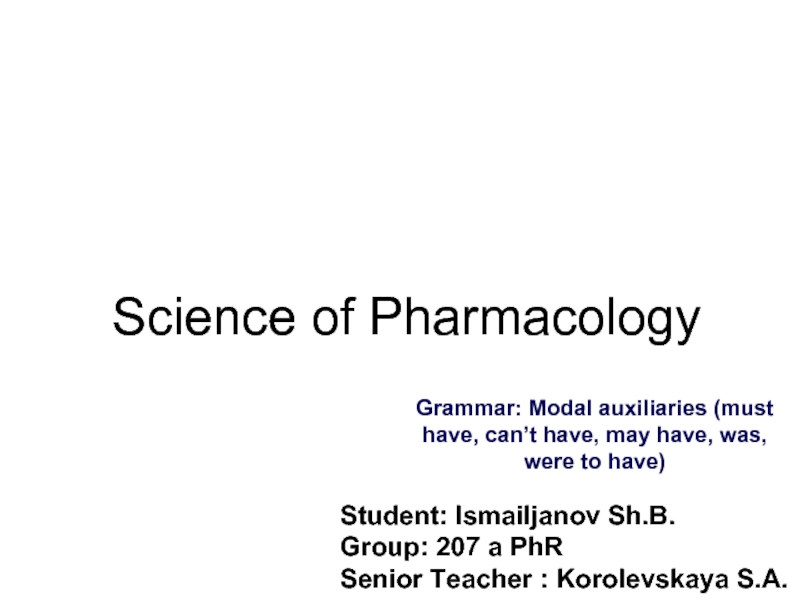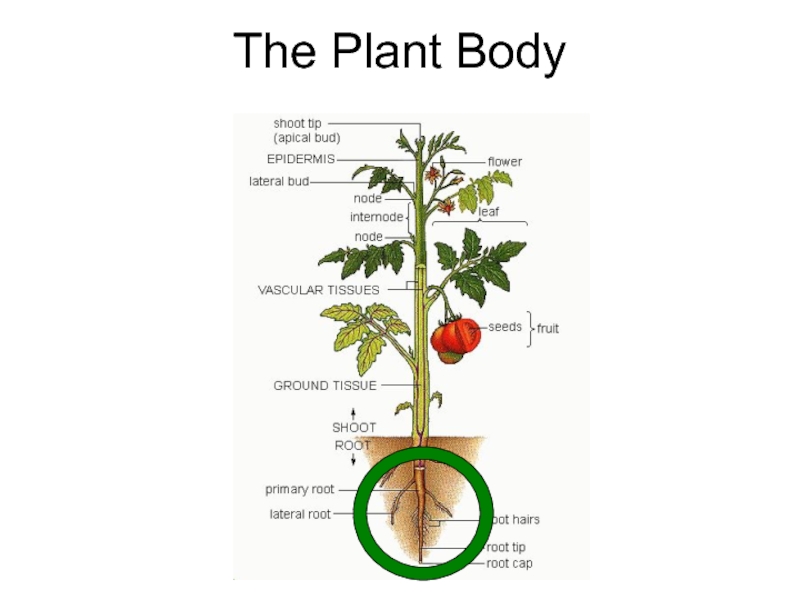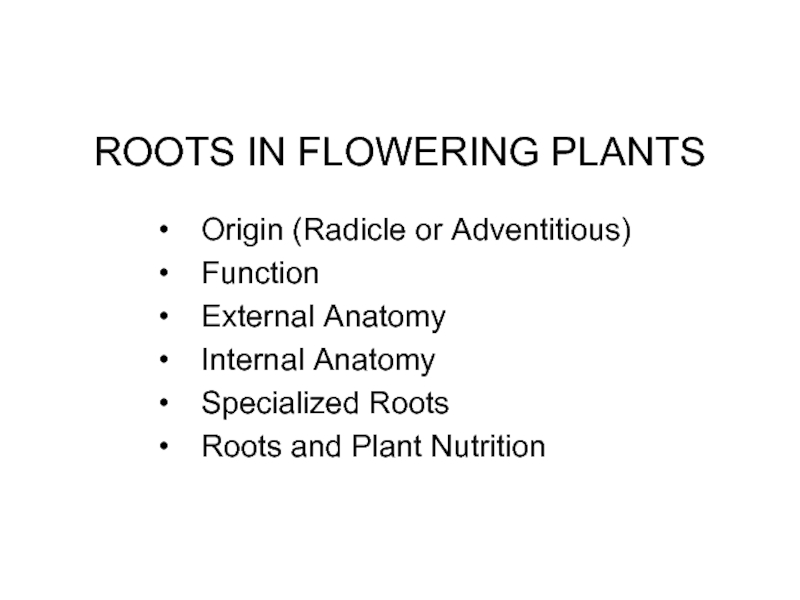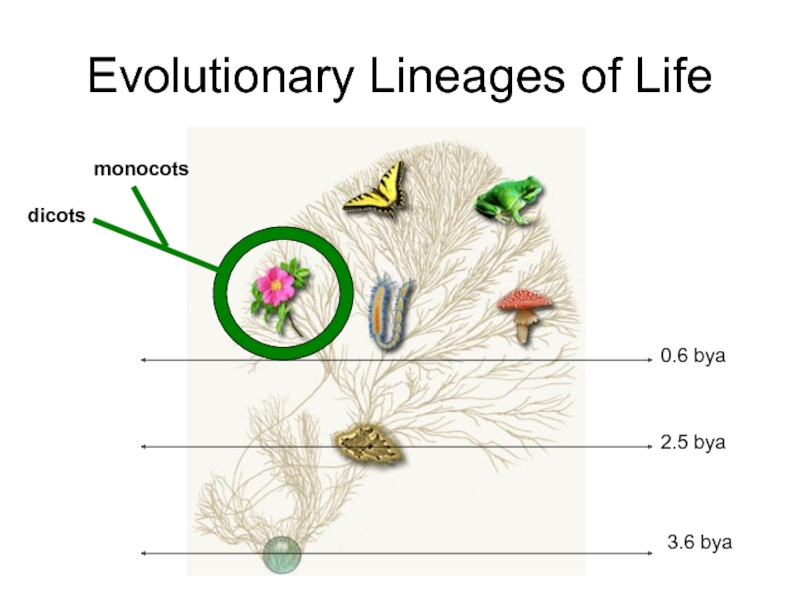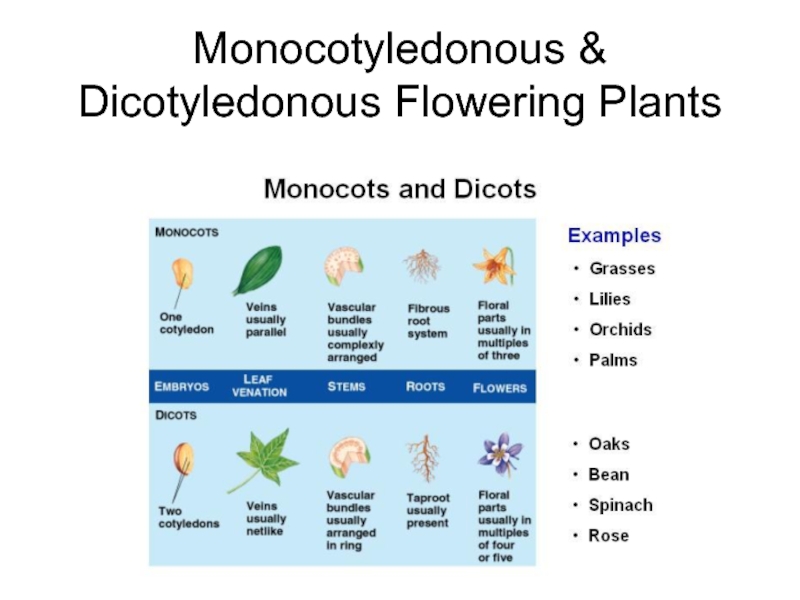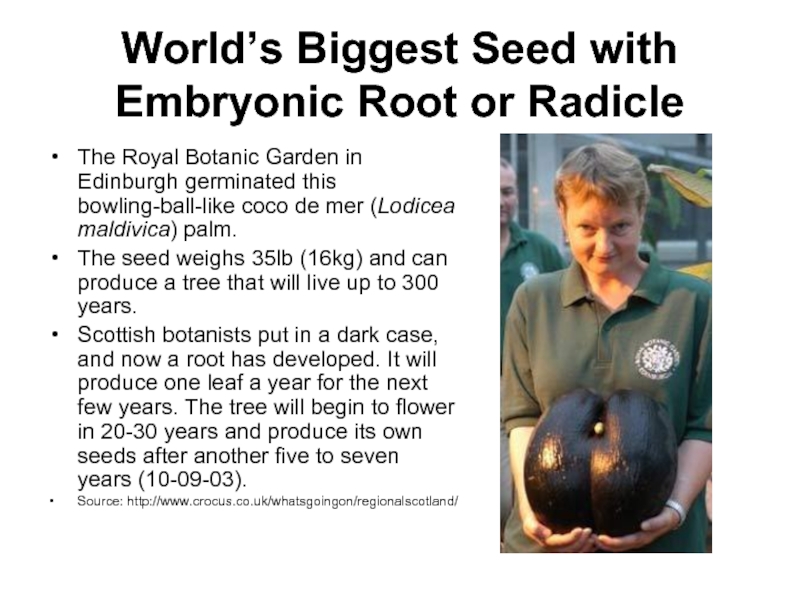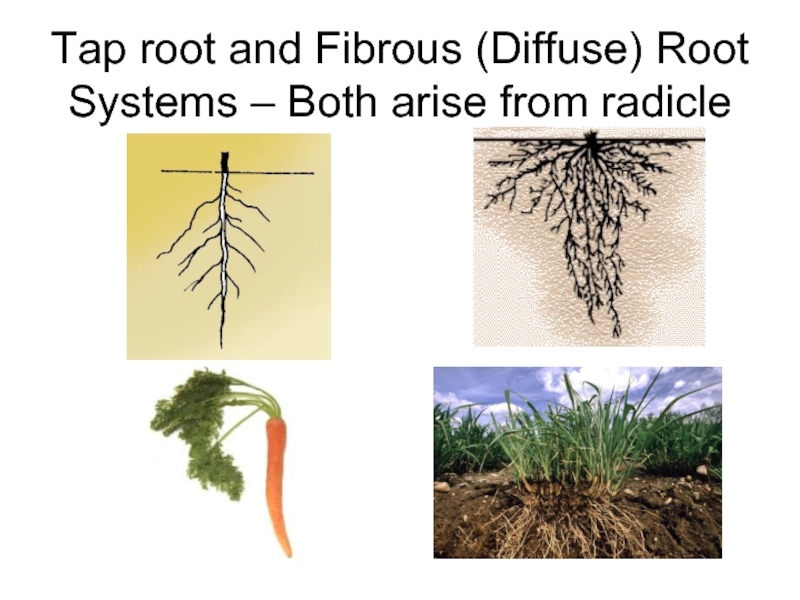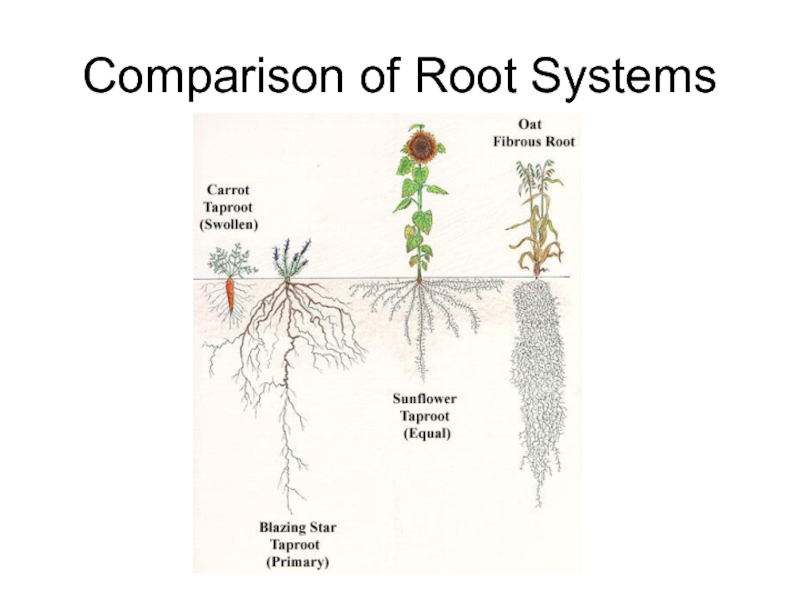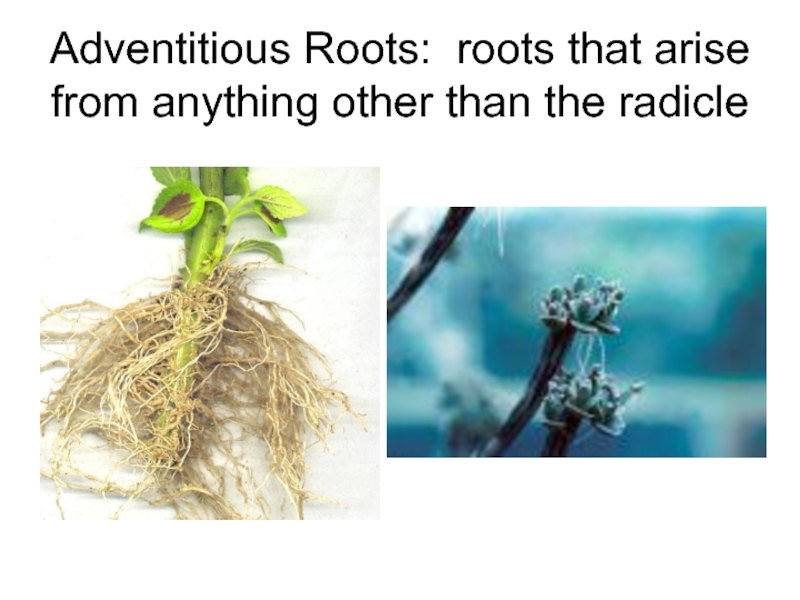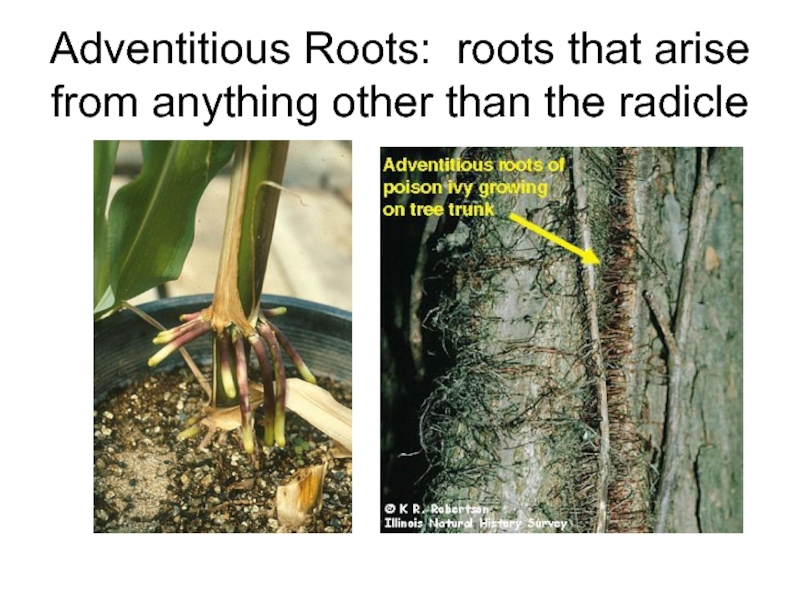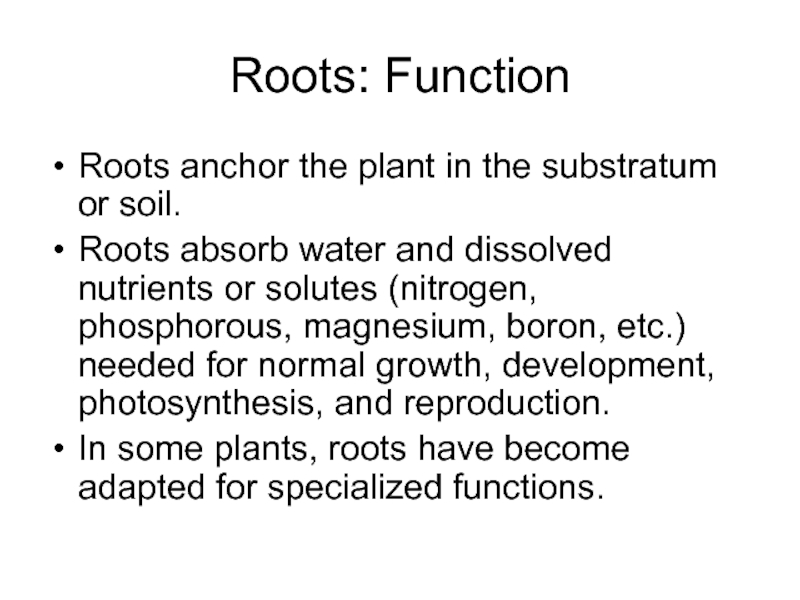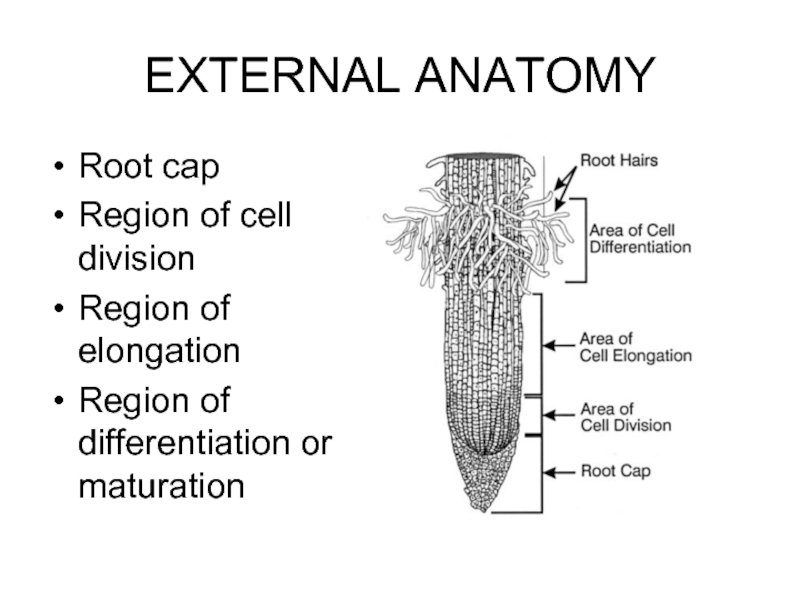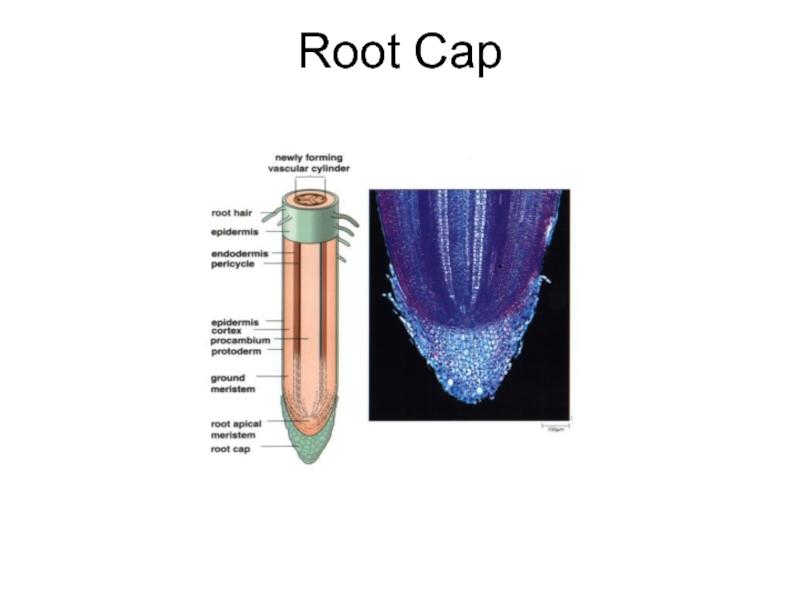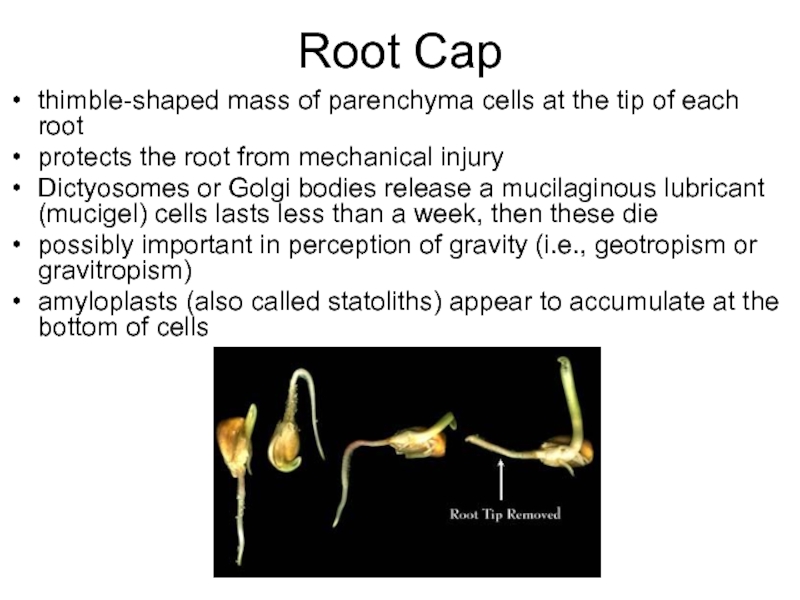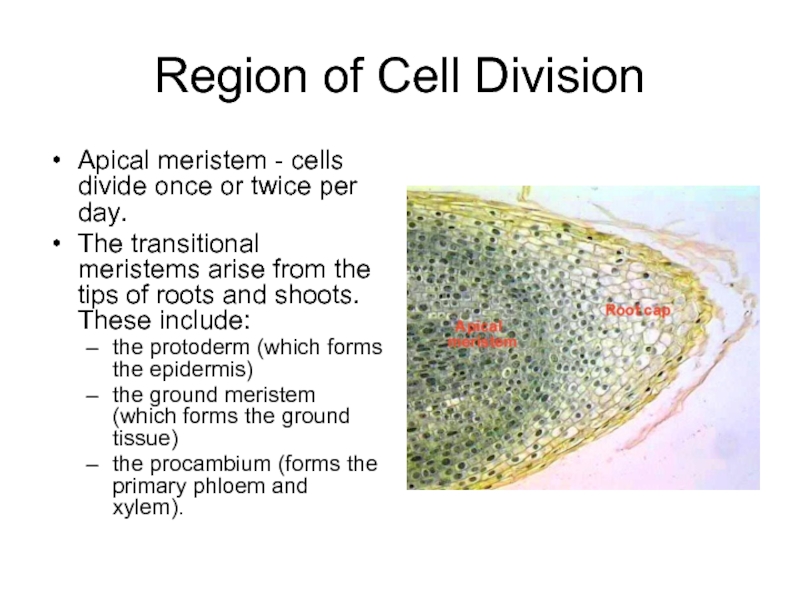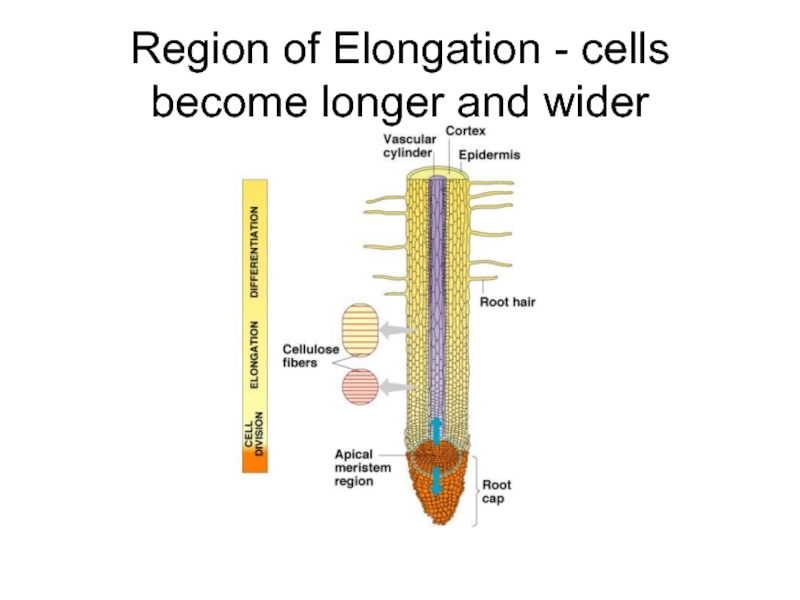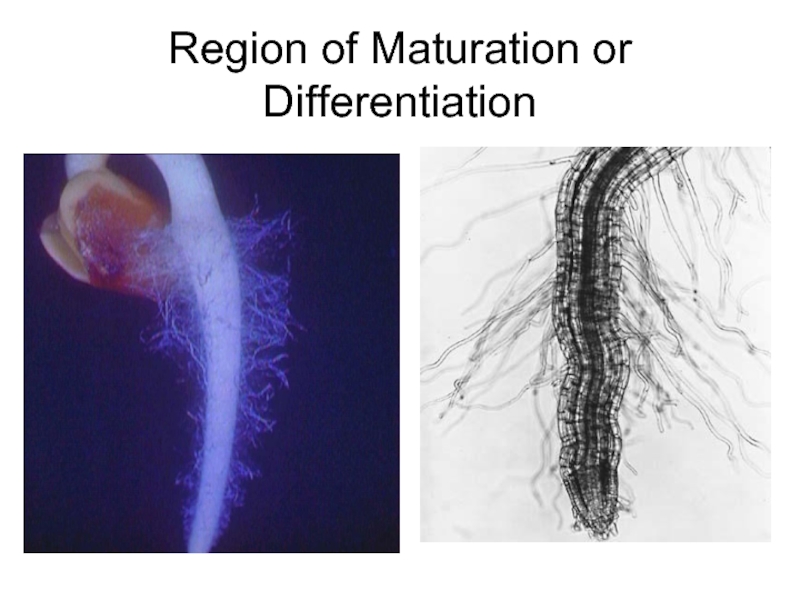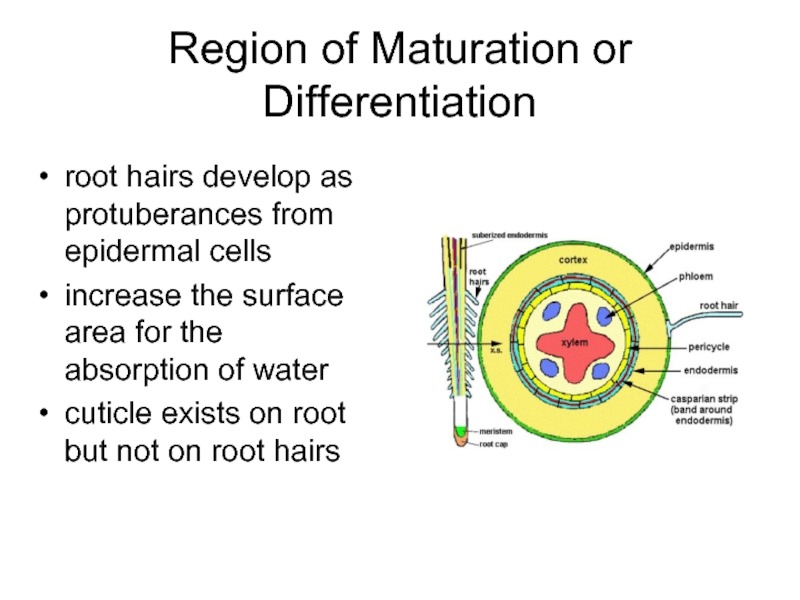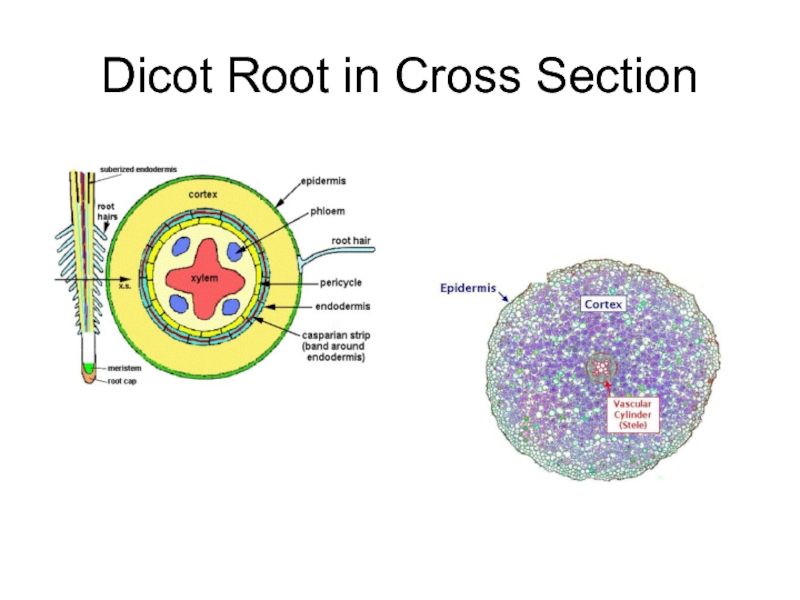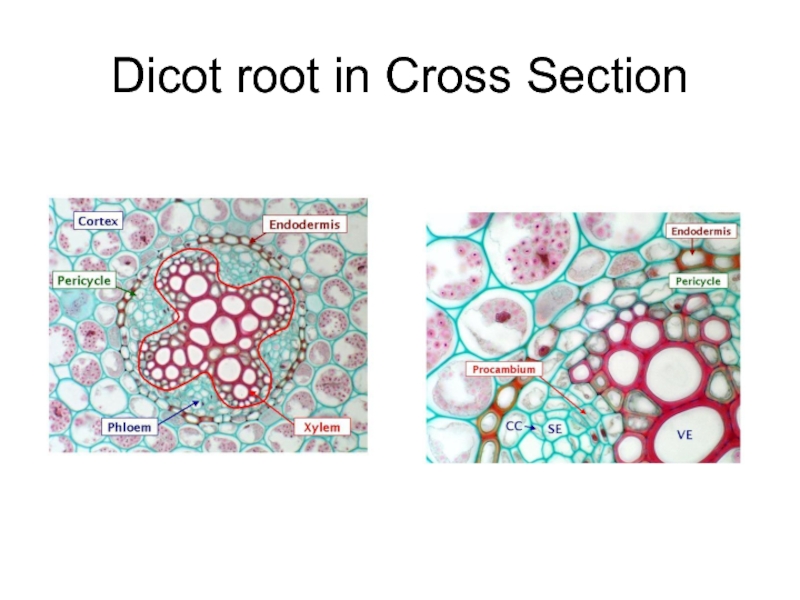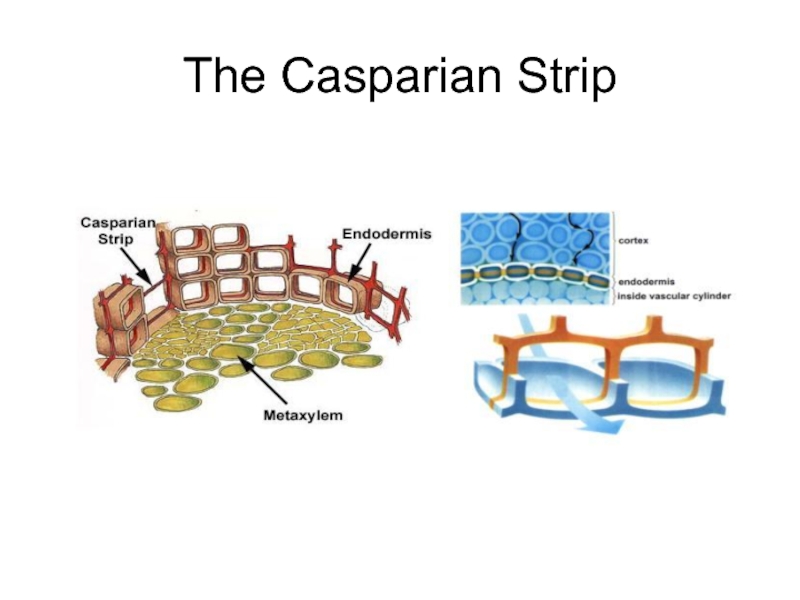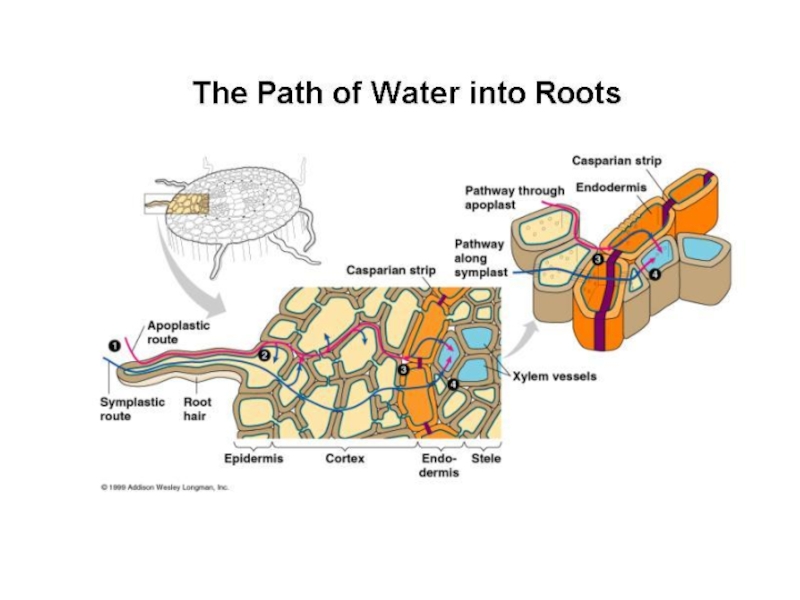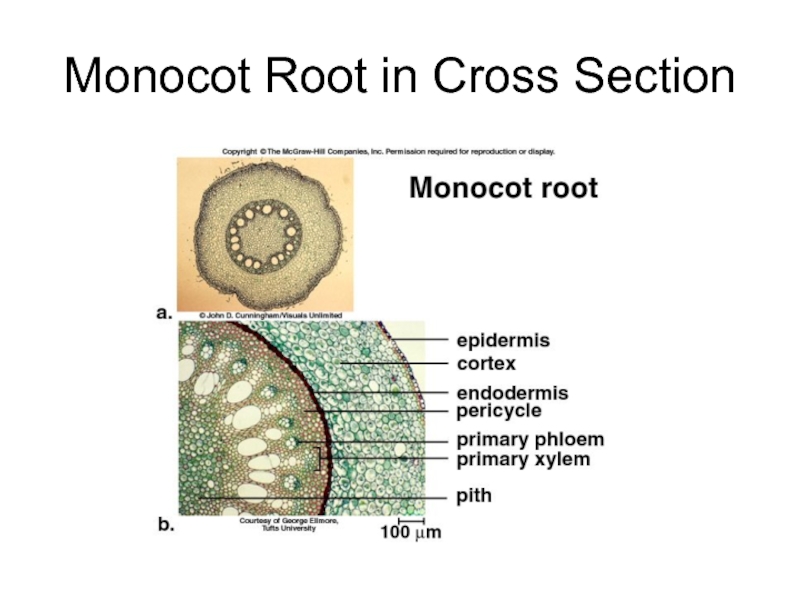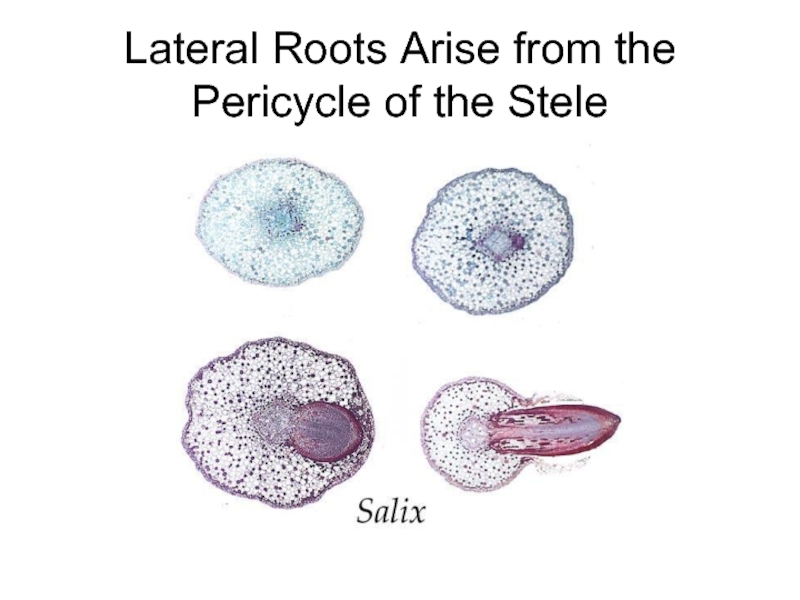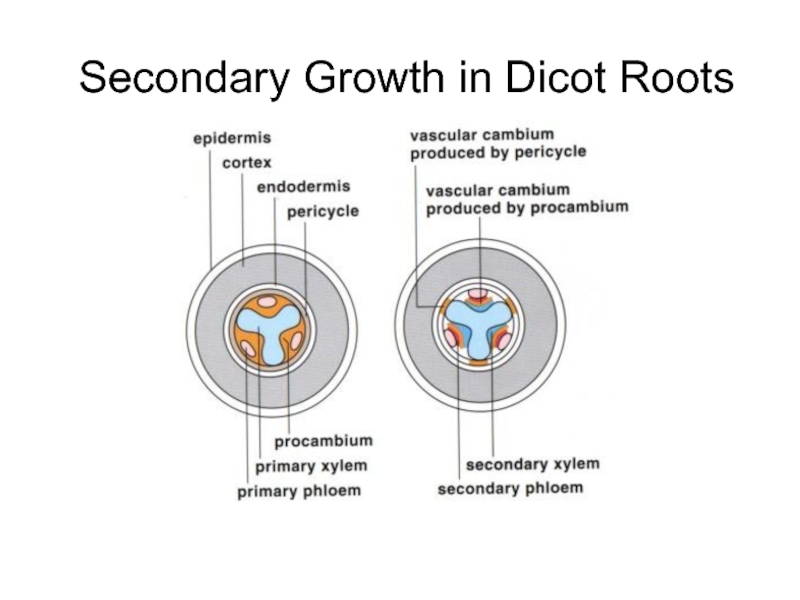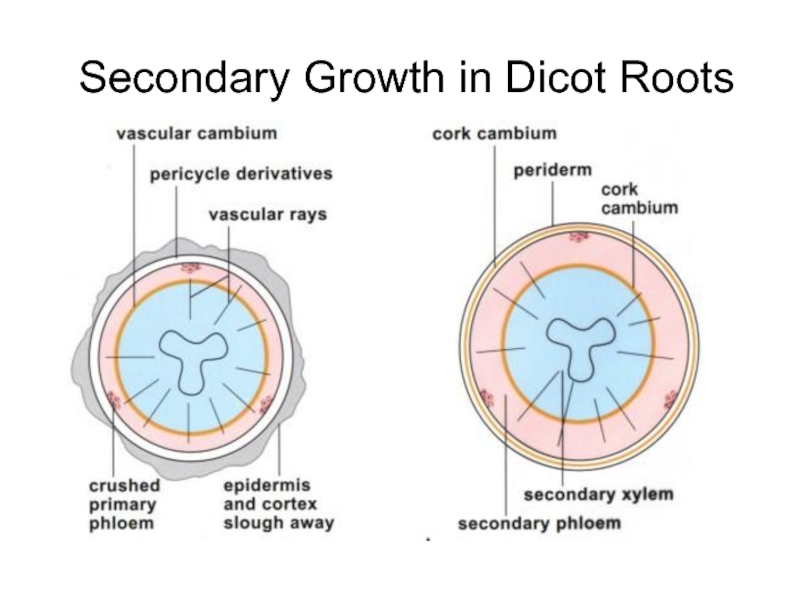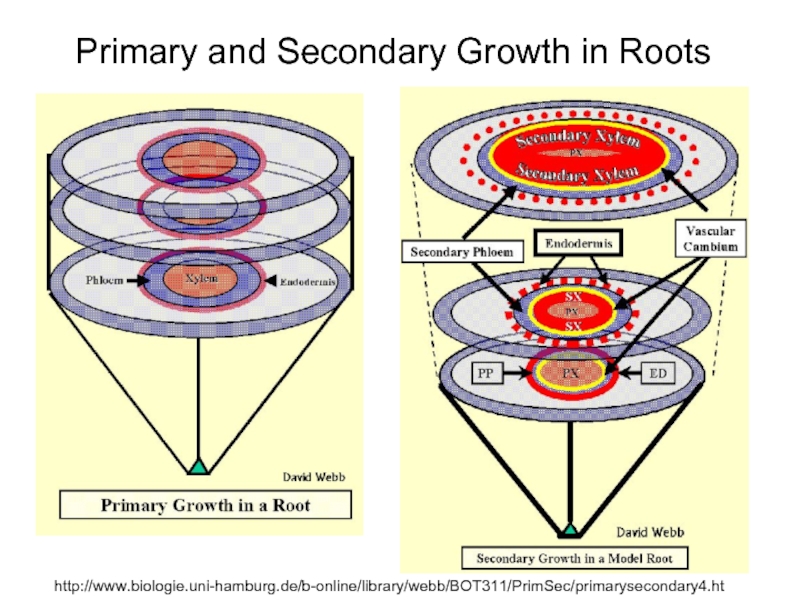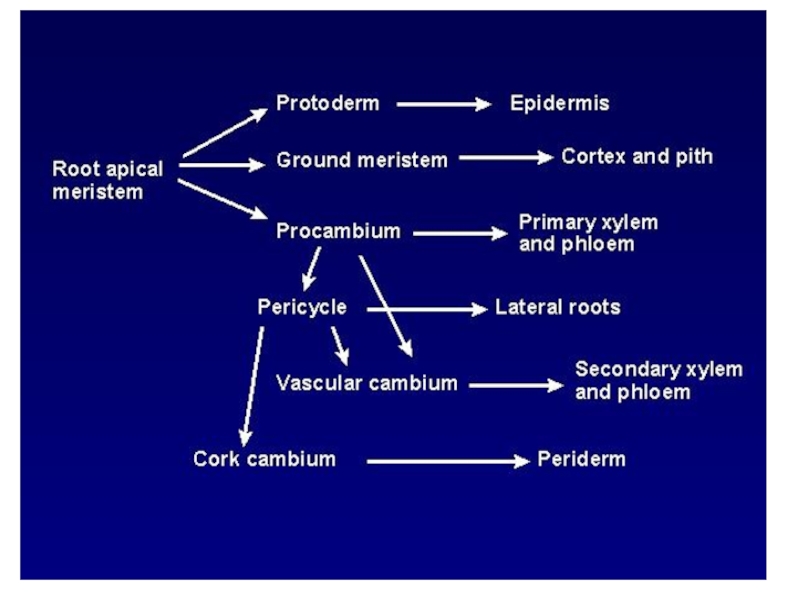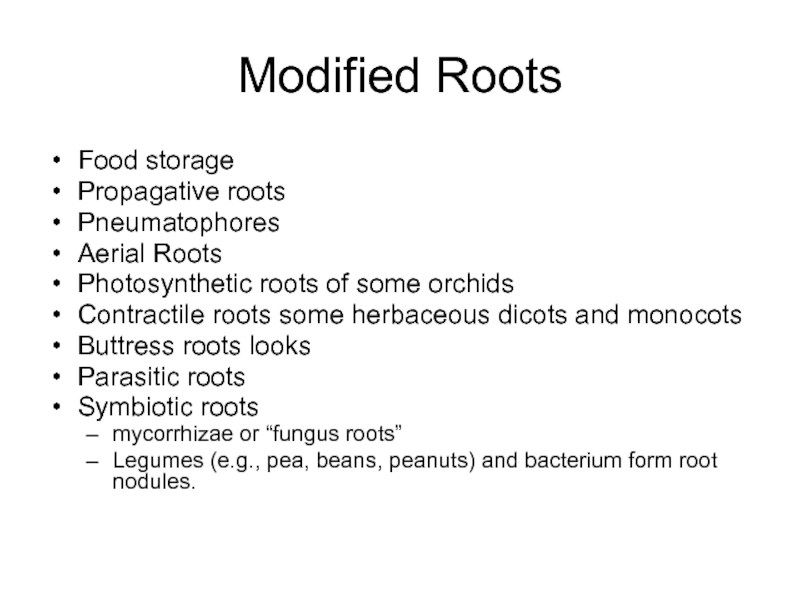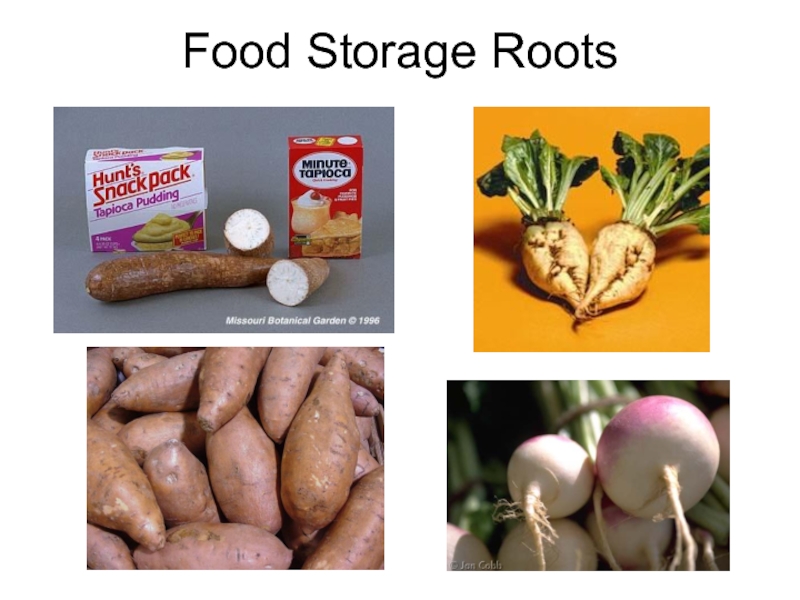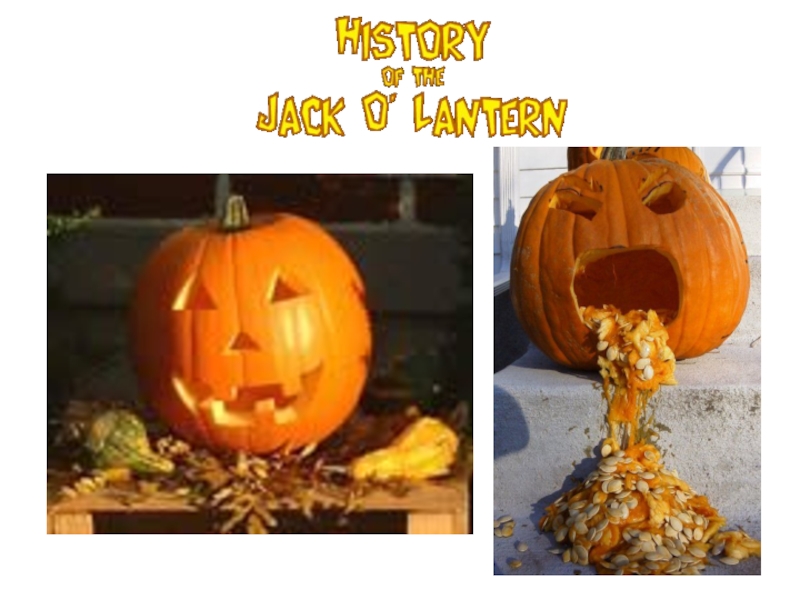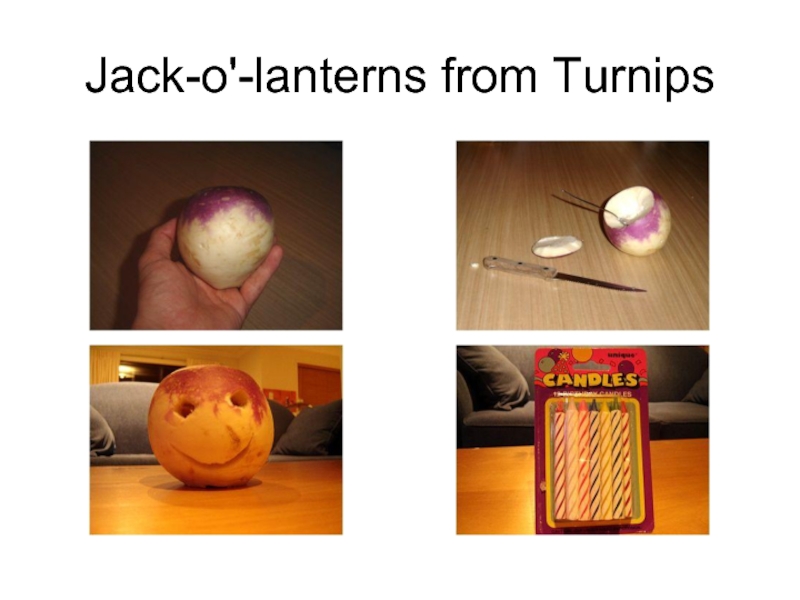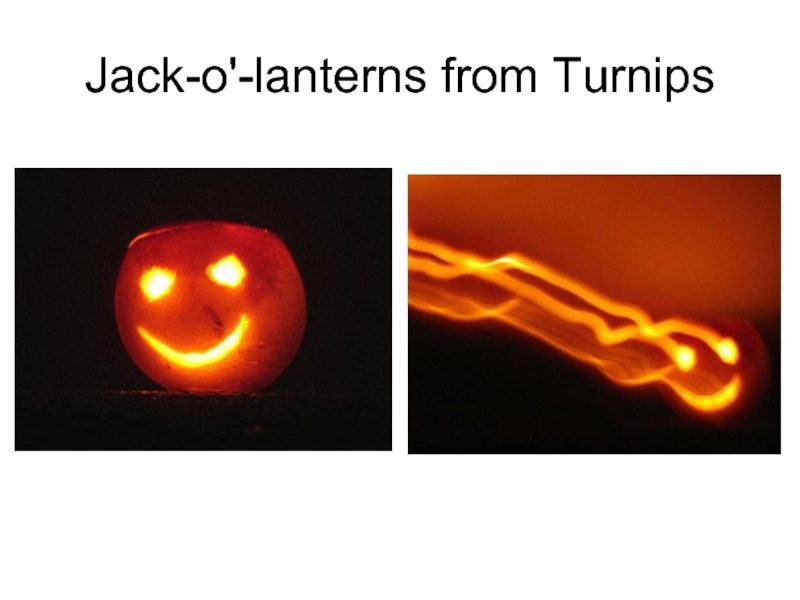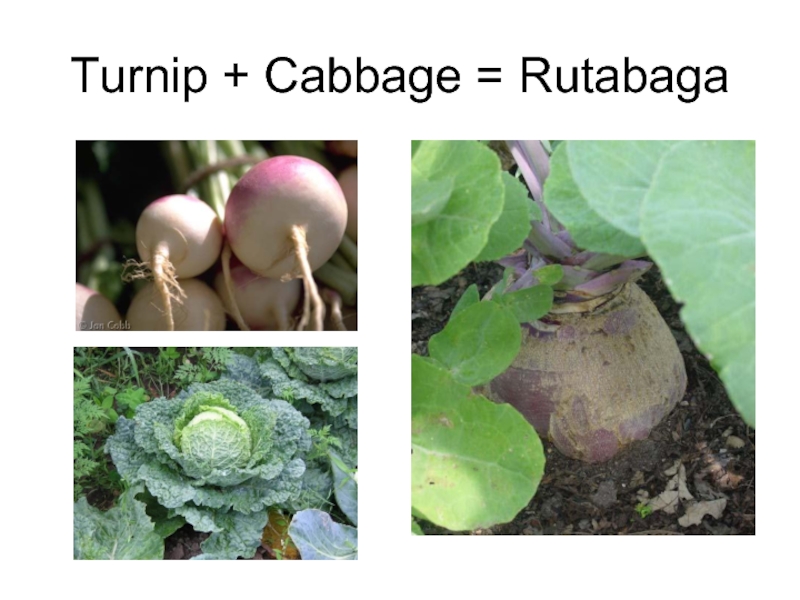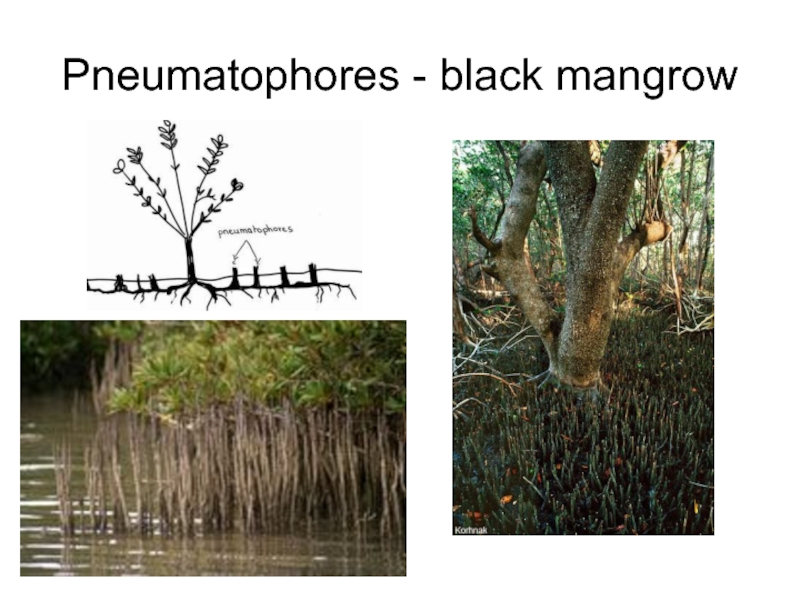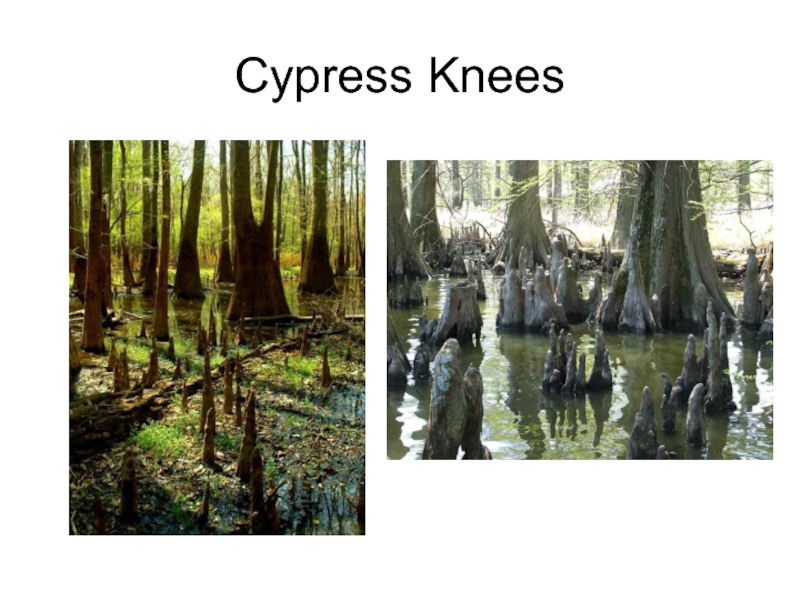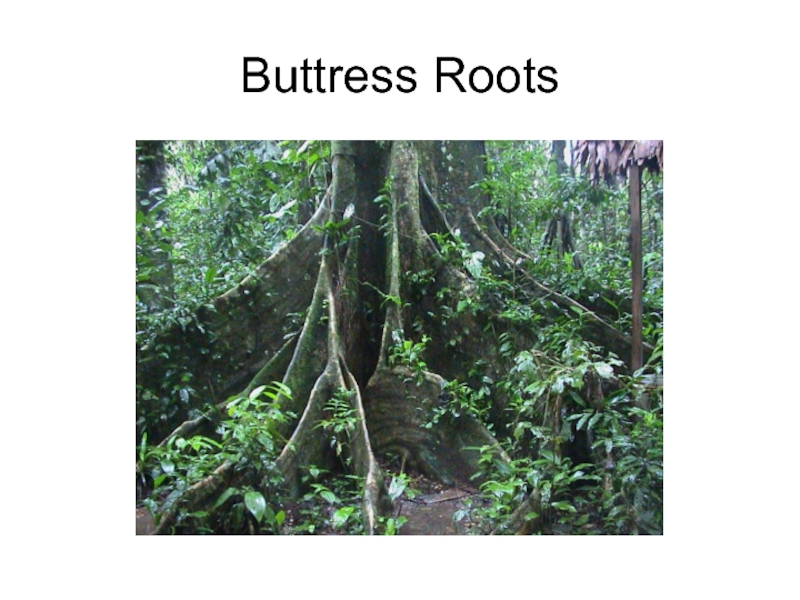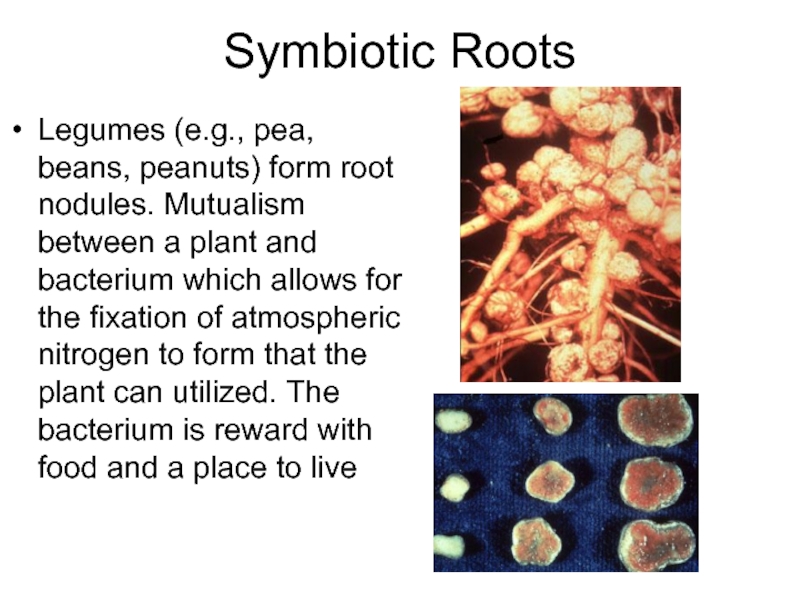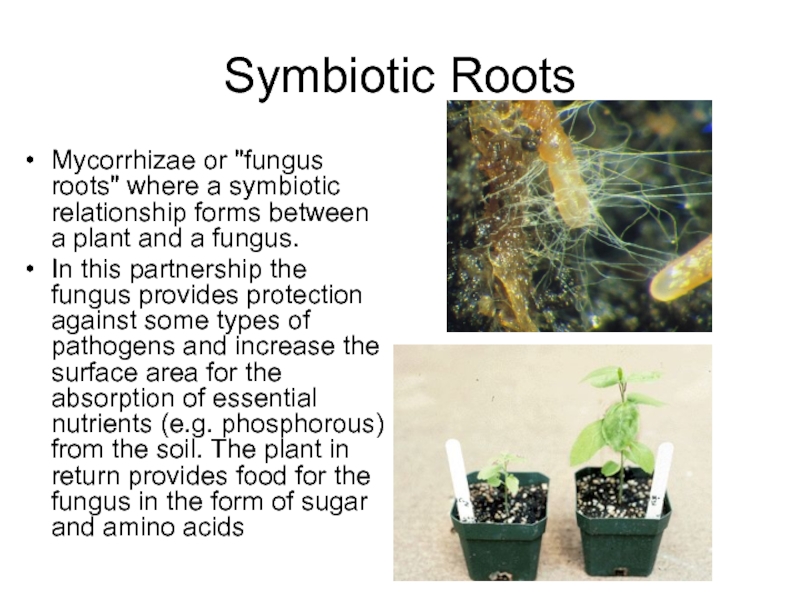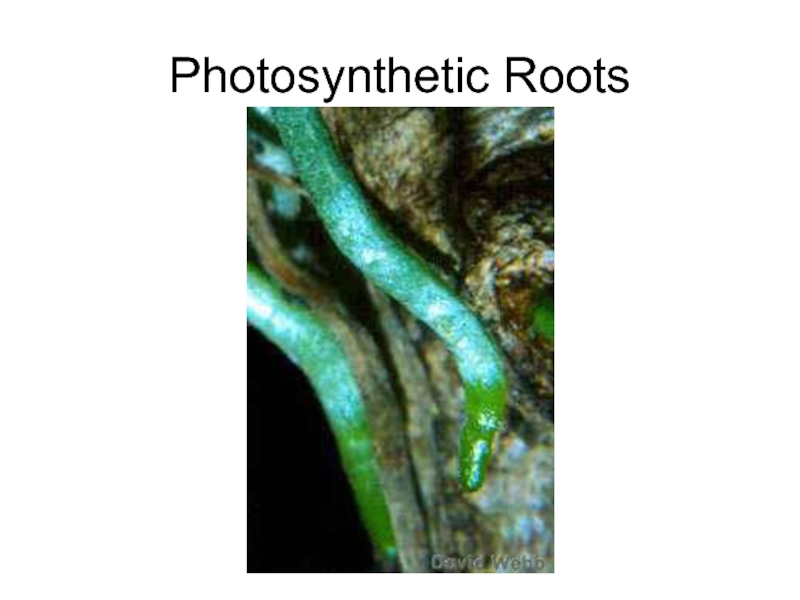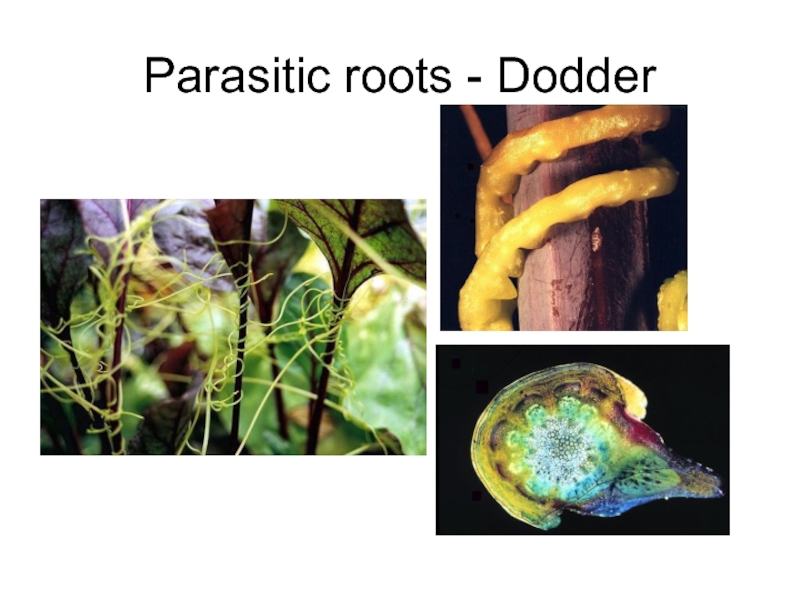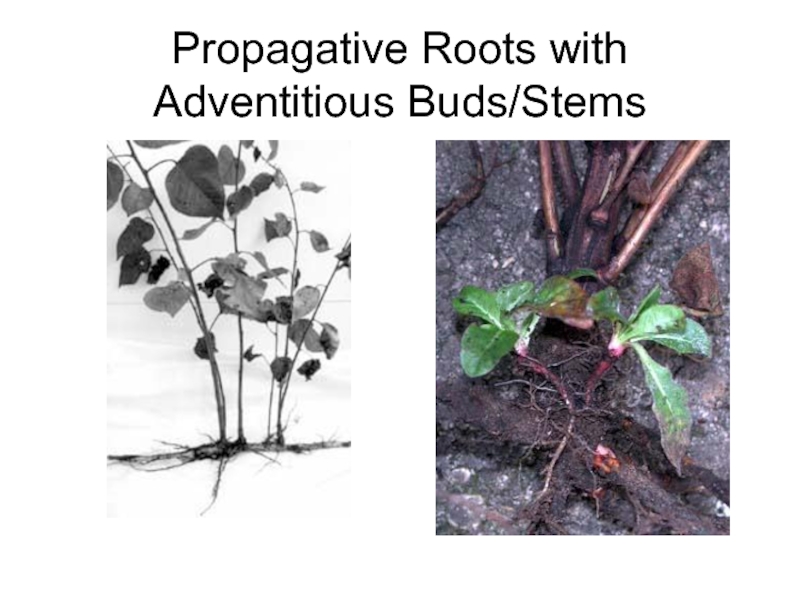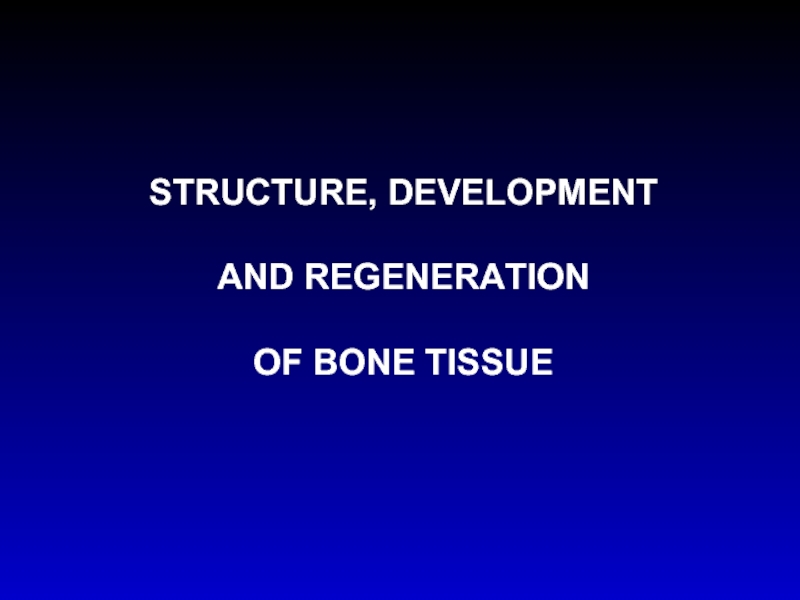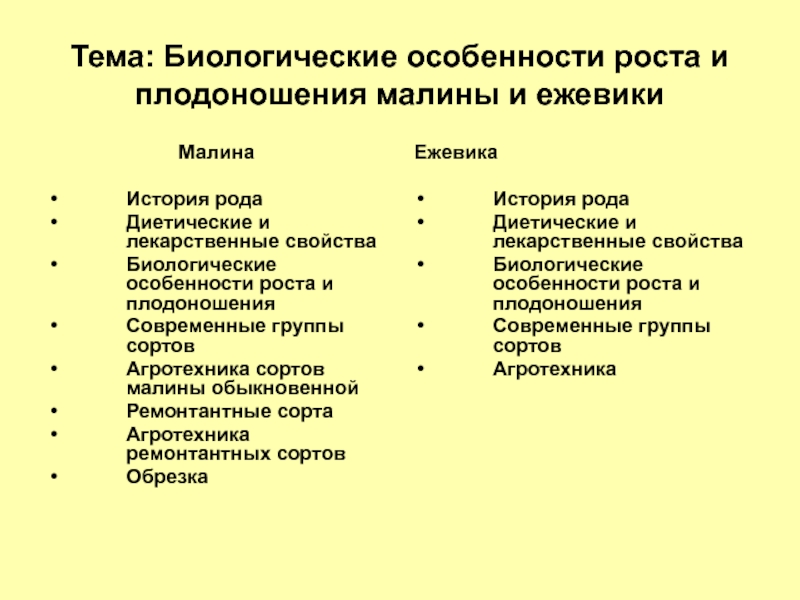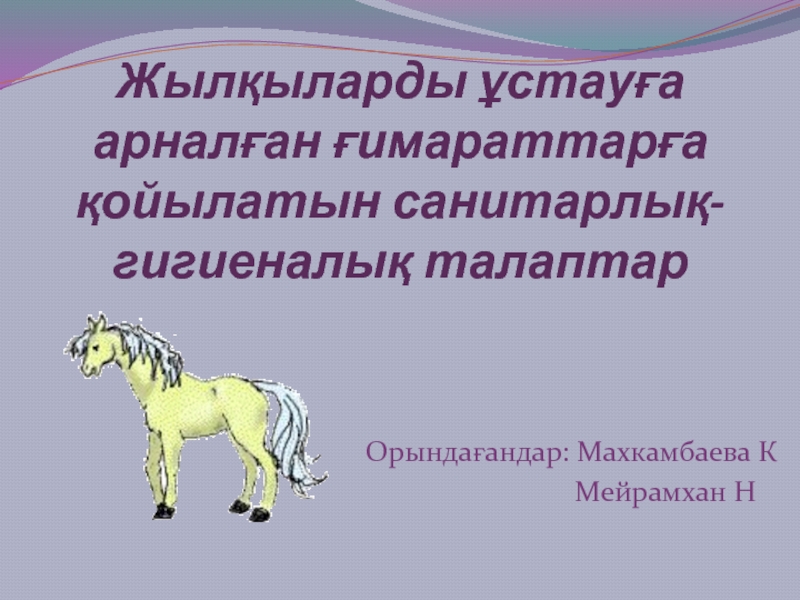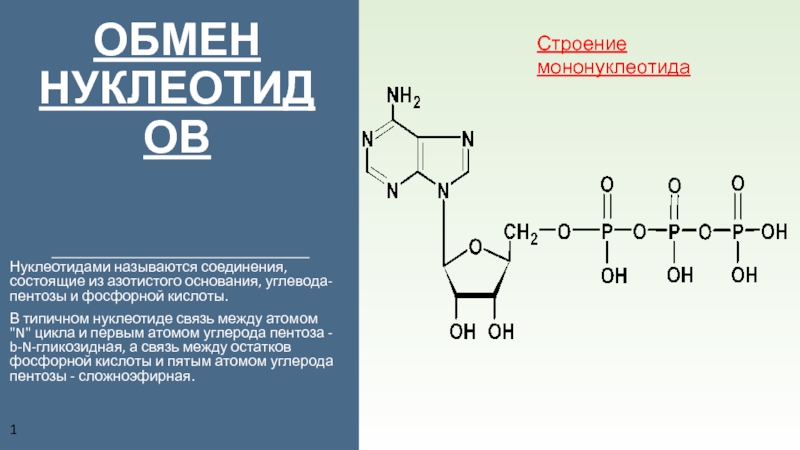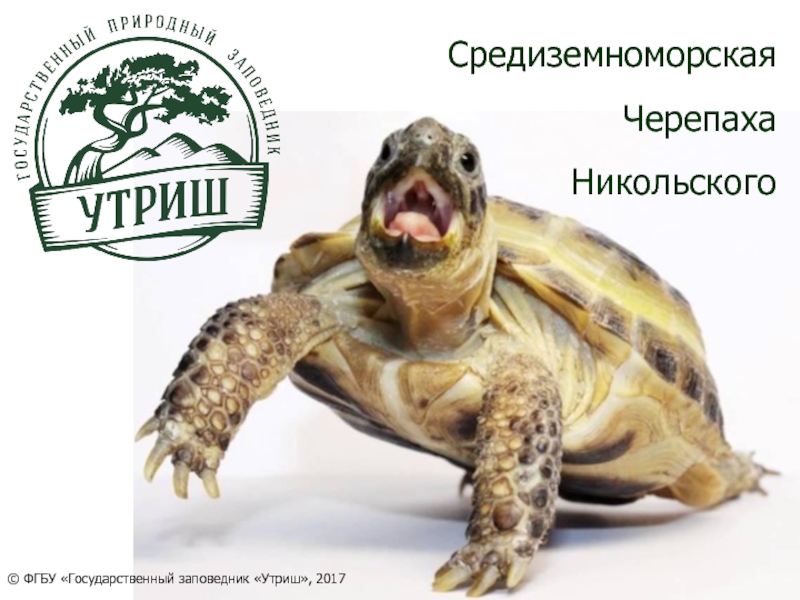Student: Ismailjanov Sh.B.
Group: 207 a PhR
Senior Teacher : Korolevskaya S.A.
- Главная
- Разное
- Дизайн
- Бизнес и предпринимательство
- Аналитика
- Образование
- Развлечения
- Красота и здоровье
- Финансы
- Государство
- Путешествия
- Спорт
- Недвижимость
- Армия
- Графика
- Культурология
- Еда и кулинария
- Лингвистика
- Английский язык
- Астрономия
- Алгебра
- Биология
- География
- Детские презентации
- Информатика
- История
- Литература
- Маркетинг
- Математика
- Медицина
- Менеджмент
- Музыка
- МХК
- Немецкий язык
- ОБЖ
- Обществознание
- Окружающий мир
- Педагогика
- Русский язык
- Технология
- Физика
- Философия
- Химия
- Шаблоны, картинки для презентаций
- Экология
- Экономика
- Юриспруденция
The plant body. Roots in flowering plants презентация
Содержание
- 1. The plant body. Roots in flowering plants
- 2. The Plant Body
- 3. ROOTS IN FLOWERING PLANTS Origin (Radicle or
- 4. Evolutionary Lineages of Life dicots monocots 3.6 bya 2.5 bya 0.6 bya
- 5. Monocotyledonous & Dicotyledonous Flowering Plants
- 6. Embryonic root or radicle
- 7. World’s Biggest Seed with Embryonic Root or
- 8. Tap root and Fibrous (Diffuse) Root Systems – Both arise from radicle
- 9. Comparison of Root Systems
- 10. Adventitious Roots: roots that arise from anything other than the radicle
- 11. Adventitious Roots: roots that arise from anything other than the radicle
- 12. Roots of the Future? Carrot Man from “Lost in Space”
- 13. Roots: Function Roots anchor the plant in
- 14. EXTERNAL ANATOMY Root cap Region
- 15. Root Cap
- 16. Root Cap thimble-shaped mass of parenchyma cells
- 17. Region of Cell Division Apical meristem -
- 18. Region of Elongation - cells become longer and wider
- 19. Region of Maturation or Differentiation
- 20. Region of Maturation or Differentiation root hairs
- 21. Dicot Root in Cross Section
- 22. Dicot root in Cross Section
- 23. The Casparian Strip
- 25. Monocot Root in Cross Section
- 26. Lateral Roots Arise from the Pericycle of the Stele
- 27. Secondary Growth in Dicot Roots
- 28. Secondary Growth in Dicot Roots
- 29. Primary and Secondary Growth in Roots http://www.biologie.uni-hamburg.de/b-online/library/webb/BOT311/PrimSec/primarysecondary4.htm
- 31. Modified Roots Food storage Propagative roots
- 32. Food Storage Roots
- 34. Jack-o'-lanterns from Turnips
- 35. Jack-o'-lanterns from Turnips
- 36. Turnip + Cabbage = Rutabaga
- 37. Pneumatophores - black mangrow
- 38. Cypress Knees
- 39. Buttress Roots
- 40. Symbiotic Roots Legumes (e.g., pea, beans,
- 41. Symbiotic Roots Mycorrhizae or "fungus roots"
- 42. Photosynthetic Roots
- 43. Parasitic roots - Dodder
- 44. Propagative Roots with Adventitious Buds/Stems
Слайд 1Science of Pharmacology
South Kazakhstan State Pharmaceutical Academy
Foreign Languages Department
SIW
Grammar: Modal
auxiliaries (must have, can’t have, may have, was, were to have)
Слайд 3ROOTS IN FLOWERING PLANTS
Origin (Radicle or Adventitious)
Function
External Anatomy
Internal Anatomy
Specialized Roots
Roots and
Plant Nutrition
Слайд 7World’s Biggest Seed with Embryonic Root or Radicle
The Royal Botanic Garden
in Edinburgh germinated this bowling-ball-like coco de mer (Lodicea maldivica) palm.
The seed weighs 35lb (16kg) and can produce a tree that will live up to 300 years.
Scottish botanists put in a dark case, and now a root has developed. It will produce one leaf a year for the next few years. The tree will begin to flower in 20-30 years and produce its own seeds after another five to seven years (10-09-03).
Source: http://www.crocus.co.uk/whatsgoingon/regionalscotland/
The seed weighs 35lb (16kg) and can produce a tree that will live up to 300 years.
Scottish botanists put in a dark case, and now a root has developed. It will produce one leaf a year for the next few years. The tree will begin to flower in 20-30 years and produce its own seeds after another five to seven years (10-09-03).
Source: http://www.crocus.co.uk/whatsgoingon/regionalscotland/
Слайд 13Roots: Function
Roots anchor the plant in the substratum or soil.
Roots
absorb water and dissolved nutrients or solutes (nitrogen, phosphorous, magnesium, boron, etc.) needed for normal growth, development, photosynthesis, and reproduction.
In some plants, roots have become adapted for specialized functions.
In some plants, roots have become adapted for specialized functions.
Слайд 14EXTERNAL ANATOMY
Root cap
Region of cell division
Region of elongation
Region of differentiation or maturation
Слайд 16Root Cap
thimble-shaped mass of parenchyma cells at the tip of each
root
protects the root from mechanical injury
Dictyosomes or Golgi bodies release a mucilaginous lubricant (mucigel) cells lasts less than a week, then these die
possibly important in perception of gravity (i.e., geotropism or gravitropism)
amyloplasts (also called statoliths) appear to accumulate at the bottom of cells
protects the root from mechanical injury
Dictyosomes or Golgi bodies release a mucilaginous lubricant (mucigel) cells lasts less than a week, then these die
possibly important in perception of gravity (i.e., geotropism or gravitropism)
amyloplasts (also called statoliths) appear to accumulate at the bottom of cells
Слайд 17Region of Cell Division
Apical meristem - cells divide once or twice
per day.
The transitional meristems arise from the tips of roots and shoots. These include:
the protoderm (which forms the epidermis)
the ground meristem (which forms the ground tissue)
the procambium (forms the primary phloem and xylem).
The transitional meristems arise from the tips of roots and shoots. These include:
the protoderm (which forms the epidermis)
the ground meristem (which forms the ground tissue)
the procambium (forms the primary phloem and xylem).
Слайд 20Region of Maturation or Differentiation
root hairs develop as protuberances from epidermal
cells
increase the surface area for the absorption of water
cuticle exists on root but not on root hairs
increase the surface area for the absorption of water
cuticle exists on root but not on root hairs
Слайд 29Primary and Secondary Growth in Roots
http://www.biologie.uni-hamburg.de/b-online/library/webb/BOT311/PrimSec/primarysecondary4.htm
Слайд 31Modified Roots
Food storage
Propagative roots
Pneumatophores
Aerial Roots
Photosynthetic roots of some
orchids
Contractile roots some herbaceous dicots and monocots
Buttress roots looks
Parasitic roots
Symbiotic roots
mycorrhizae or “fungus roots”
Legumes (e.g., pea, beans, peanuts) and bacterium form root nodules.
Contractile roots some herbaceous dicots and monocots
Buttress roots looks
Parasitic roots
Symbiotic roots
mycorrhizae or “fungus roots”
Legumes (e.g., pea, beans, peanuts) and bacterium form root nodules.
Слайд 40Symbiotic Roots
Legumes (e.g., pea, beans, peanuts) form root nodules. Mutualism
between a plant and bacterium which allows for the fixation of atmospheric nitrogen to form that the plant can utilized. The bacterium is reward with food and a place to live
Слайд 41Symbiotic Roots
Mycorrhizae or "fungus roots" where a symbiotic relationship forms
between a plant and a fungus.
In this partnership the fungus provides protection against some types of pathogens and increase the surface area for the absorption of essential nutrients (e.g. phosphorous) from the soil. The plant in return provides food for the fungus in the form of sugar and amino acids
In this partnership the fungus provides protection against some types of pathogens and increase the surface area for the absorption of essential nutrients (e.g. phosphorous) from the soil. The plant in return provides food for the fungus in the form of sugar and amino acids
